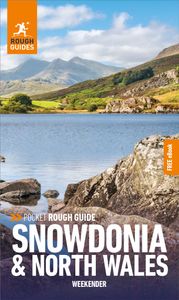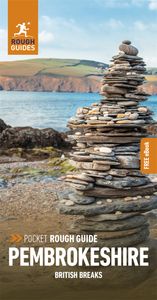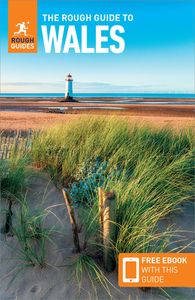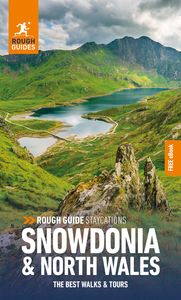Caldey Island
Celtic monks first settled Caldey Island (Ynys Pyr), a couple of miles offshore from Tenby, in the sixth century. This community may have been wiped out in Viking raids, but in 1136 Benedictine monks founded a priory here. After the dissolution of the monasteries in 1536, the island was bought and sold until 1906, when it was again sold to a Benedictine order, and subsequently to Reformed Cistercians, who have run the place since then.
A short woodland walk from the island’s jetty leads to its main settlement: a tiny post office, the popular Tea Gardens and a perfume shop selling the herbal fragrances distilled by the monks from Caldey’s abundant flora. The narrow road to the left leads past the abbey to the heavily restored chapel of St David, whose most impressive feature is the round-arched Norman door.
A lane leads south from the village to the old priory, and the remarkable, twelfth-century St Illtud’s church, which houses one of the most significant pre-Norman finds in Wales, the sandstone Ogham Cross, under the stained-glass window on the south side of the nave. It is carved with an inscription from the sixth century, which was added to, in Latin, during the ninth. The lane continues south, climbing up to the gleaming white island lighthouse, built in 1828, from where there are memorable views.
Carmarthen and around
In the early eighteenth century CARMARTHEN (Caerfyrddin) was the largest town in the country and it remains the regional hub, a solid, if hardly thrilling, place best known as the supposed birthplace of the wizard Merlin.
The most picturesque part of town is around Nott Square, where the handsome eighteenth-century Guildhall sits at the base of Edward I’s uninspiring castle. From the top of Nott Square, King Street heads northeast towards the undistinguished St Peter’s Church and the Victorian School of Art, which has metamorphosed into Oriel Myrddin, a craft centre and excellent gallery that acts as an imaginative showcase for local artists.
Dylan Thomas
Dylan Thomas was the stereotypical Celt – fiery, verbose, richly talented and habitually drunk. Born in 1914 into a middle-class family in Swansea’s Uplands district, Dylan’s first glimmers of literary greatness came when he joined the South Wales Evening Post as a reporter. Some of his most popular tales in the Portrait of the Artist as a Young Dog were inspired during this period.
Book things to do in Swansea
Rejecting what he perceived as the coarse provincialism of Swansea and Welsh life, Thomas arrived in London as a broke 20-year-old in 1934, weeks before the appearance of his first volume of poetry, which was published as the first prize in a Sunday Referee competition. Another volume followed shortly afterwards, cementing the engaging young Welshman’s reputation in the British literary establishment. Having married in 1937, he returned to Wales and settled in the hushed, provincial backwater of Laugharne. Short stories – crackling with rich and melancholy humour – tumbled out as swiftly as poems, further widening his base of admirers, though, like so many other writers, Thomas only gained star status posthumously. Perhaps better than anyone, he wrote with an identifiably Welsh rhythmic wallow in the language.
Thomas, especially in public, liked to adopt the persona of what he perceived to be an archetypal stage Welshman: sonorous tones, loquacious, romantic and inclined towards a stiff tipple. This role was particularly popular in the United States, where he journeyed on lucrative lecture tours. It was on one of these that he died, in 1953, supposedly from a massive whisky overdose, although it now seems likely he was a victim of pneumonia or diabetes and incompetent doctors. Just one month earlier, he had put the finishing touches to what many regard as his masterpiece: Under Milk Wood, a “play for voices”.


















